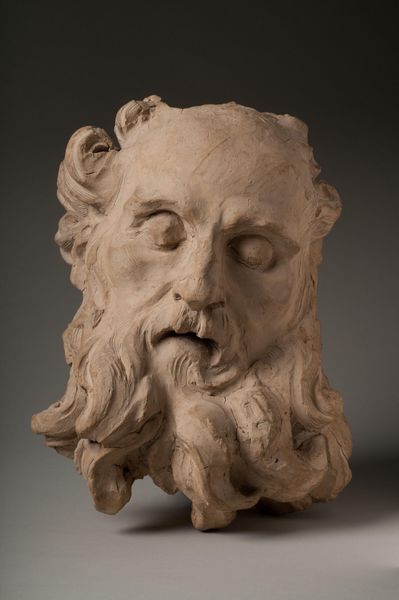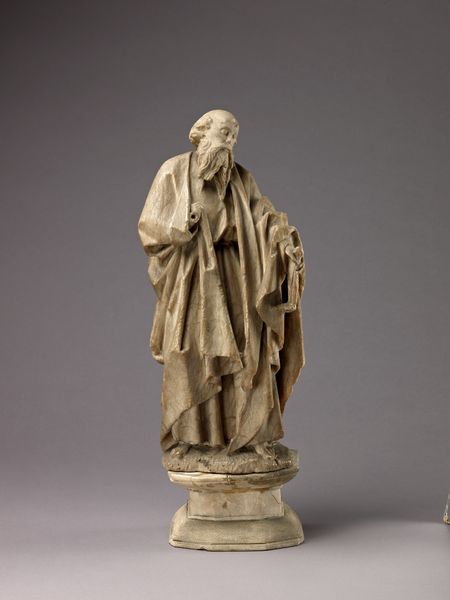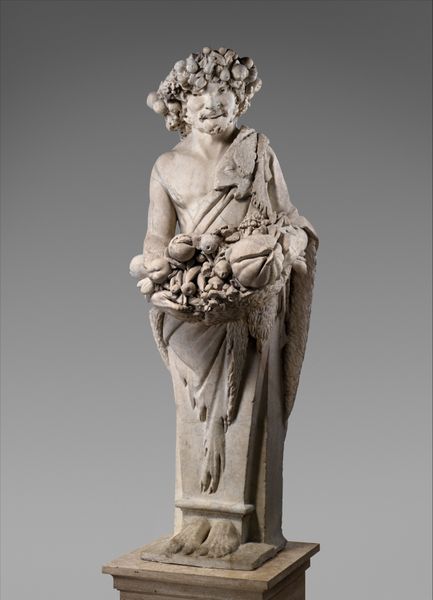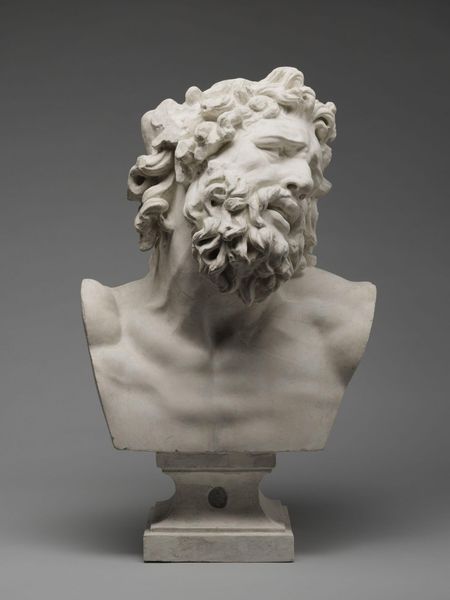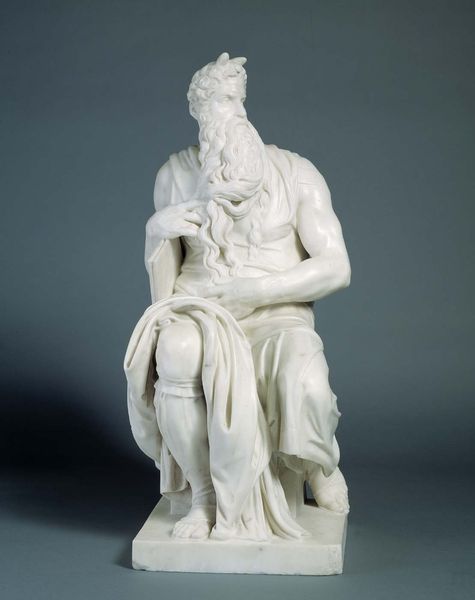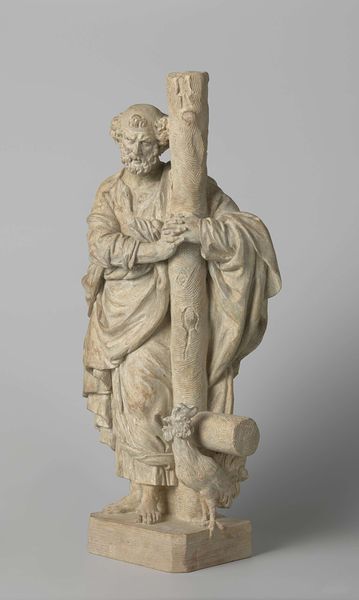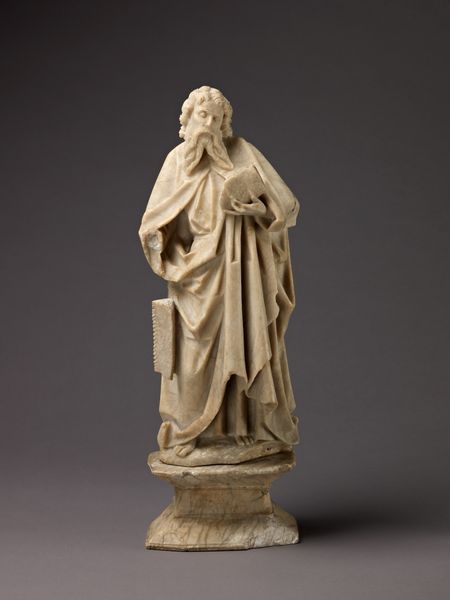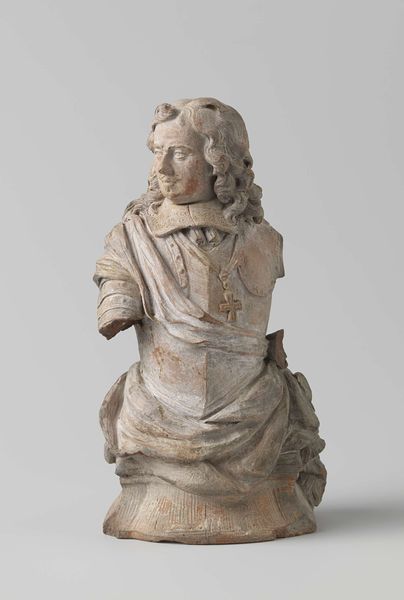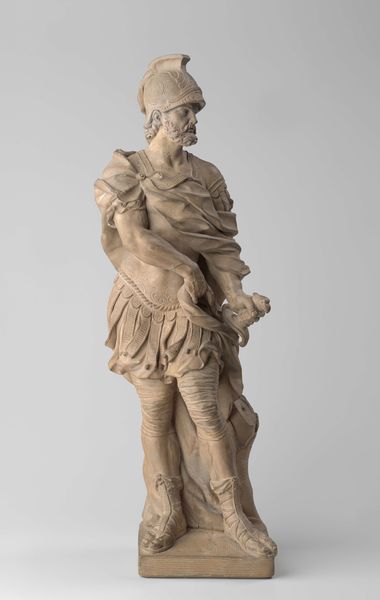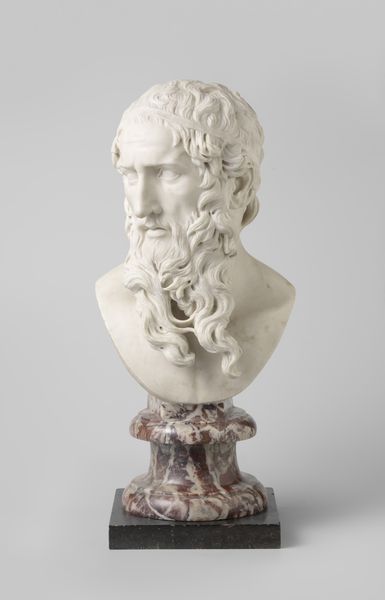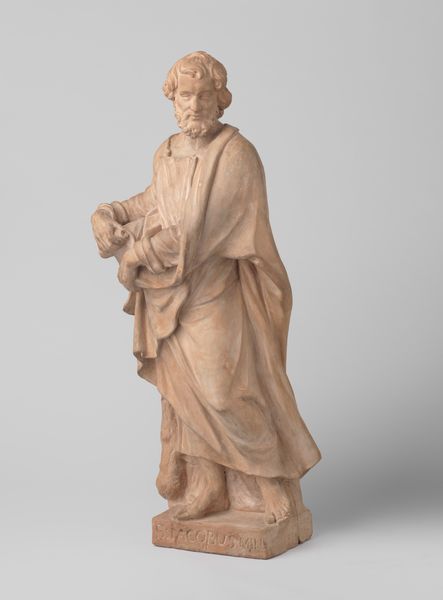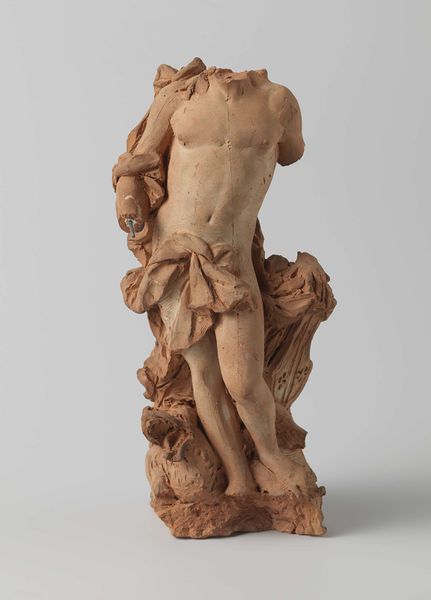
carving, sculpture, plaster
#
portrait
#
carving
#
baroque
#
sculpture
#
classical-realism
#
figuration
#
form
#
sculpture
#
plaster
Dimensions: height 24 cm, width 23.5 cm, depth 12.5 cm
Copyright: Rijks Museum: Open Domain
Curator: Before us, we have a piece entitled "Bust of Neptune," sculpted around 1712, crafted from plaster using a carving method. Editor: There's an immediate melancholic presence, isn’t there? Neptune appears weary, burdened perhaps by the weight of his oceanic dominion. The muted plaster enhances that somber tone. Curator: Well, such busts were very popular, especially amongst the aristocratic elite as a means of displaying both classical knowledge and refinement. Representing Neptune also signified a connection with the vastness and power associated with controlling the seas. Editor: Absolutely, but I wonder about Neptune’s role beyond a symbol of authority for European nations flexing colonial naval muscle. There's also something intrinsically queer about figures from mythology who are always transgressing boundaries and embodying change, not just projecting power, what about *that* socio-historical role? Curator: Indeed. The politics of display played a key part, too. A figure like Neptune in the collection helped situate their patron within an intellectual and cultural heritage linking themselves to Ancient Rome and ideals of empire. Consider the statement it makes to guests! Editor: Exactly, yet that positioning demands further inquiry. While those ideals of the elite might suggest this sculpture is reinforcing their authority and influence within the context of colonial ventures and its historical context, is there perhaps an undercurrent revealing how the patriarchy limits us all? And isn't that precisely what the patriarchy does-- weighs everyone down, kings and sea gods alike? Curator: It does speak to the complex dialogue art establishes. The sculpture operates on multiple layers: a declaration of mastery but perhaps, now, a study in hubris. Editor: Yes! And maybe by embracing such duality, can we foster crucial reevaluations about art historical themes of representation and power that resonate for those outside those narrow elite historical structures and perspectives! Curator: Ultimately, exploring "Bust of Neptune" enables a dialogue around themes of authority, maritime prowess, and even the beginnings of how these narratives intersect. Editor: Which, in the present, beckons us to delve into these multifaceted, deeply relevant socio-historical themes far beyond maritime exploits.
Comments
No comments
Be the first to comment and join the conversation on the ultimate creative platform.
